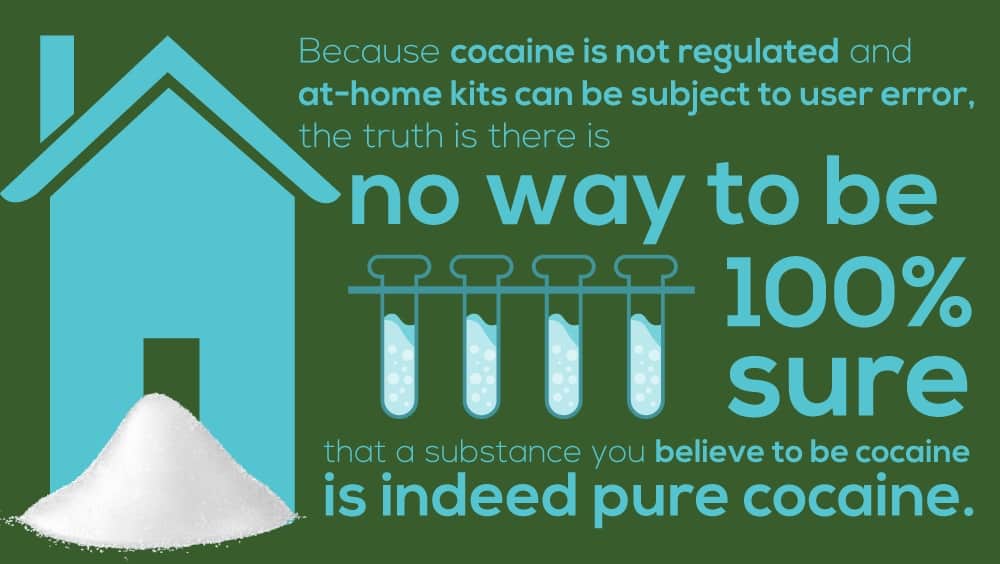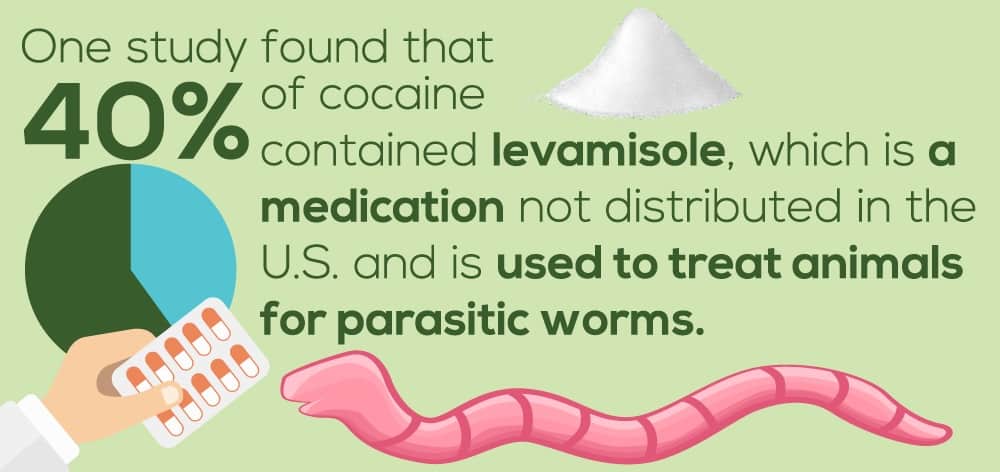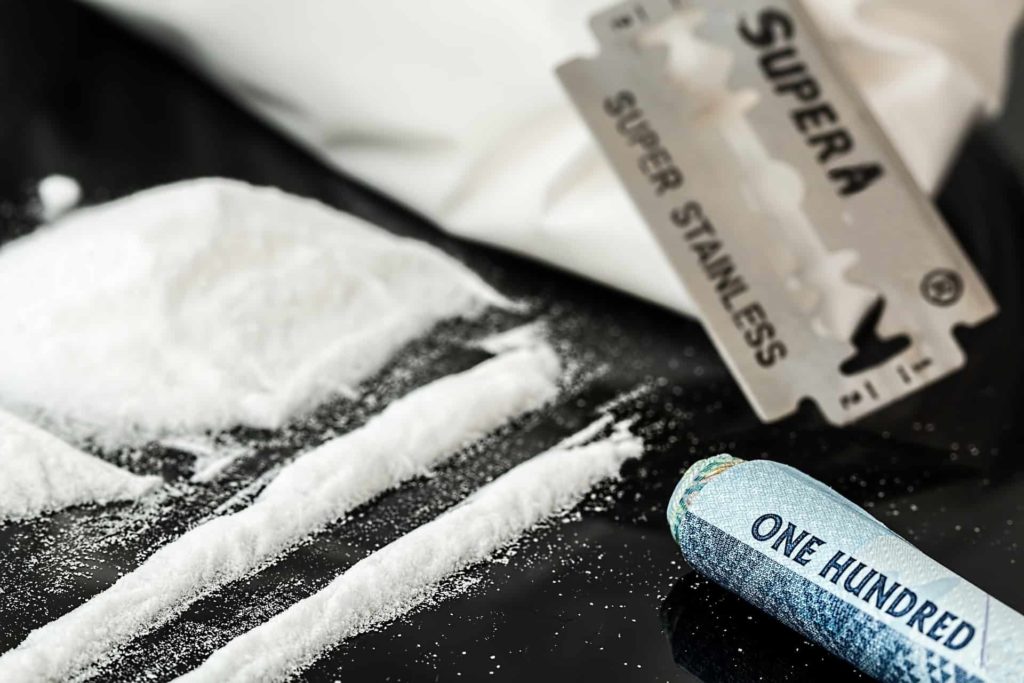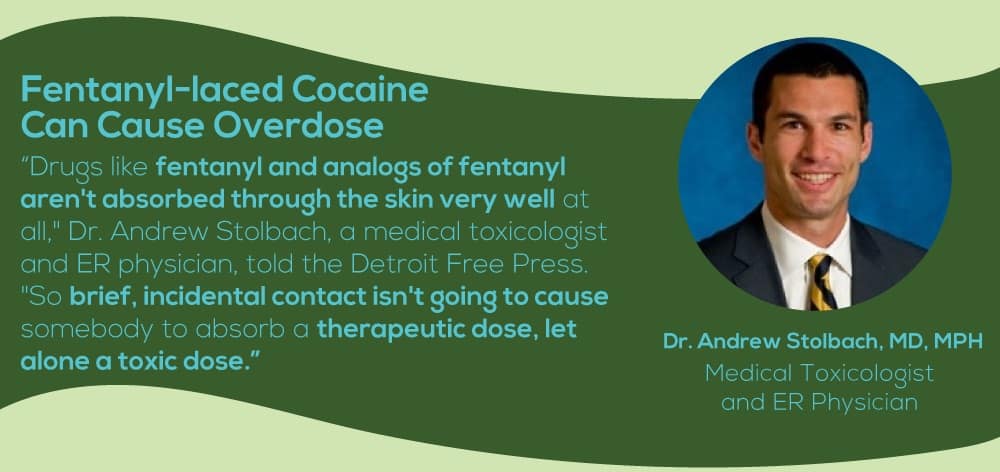Cocaine: Identification Through Testing, Sensory ID
You may have seen movies or TV shows where a cop licks their forefinger, takes a practiced swipe with it into a baggie containing a white substance, and then licks the powder residue thoughtfully. This technique most likely was not taught during police academy. You might recall this scene when a similar situation happens not only close to home but right in the laundry room of your own home while you’re holding a similar baggie. You picked it up off the floor where it fell from your son’s jeans pocket, annoyed at first that you almost tossed some trash into the washing machine. But a closer look shows there is a loose powder inside. Somehow, you put it aside for a minute and finish loading the machine. A few minutes later, you’re sitting on the couch, the bag sitting across from you on the coffee table. What do you do? Wondering if a loved one is putting themself in harm’s way can be terrifying. You may also be nervous that bringing up the topic will cause fighting or perhaps make the person leave the home. And if they leave the home, how are you going to know if they’re OK? Addiction to any substance is scary for everyone involved. Cocaine addiction is the fourth-largest addiction in Idaho, behind alcohol, tobacco, and prescription drugs.
Science Helps Law Enforcement ID Cocaine, Other Drugs
Science has helped police move on from the previously mentioned old-school ID tactic while working in the field. Police now use chemical color test kits that allow them to operate a make-shift science lab in the field to identify cocaine. This is often done with the suspected cocaine, also known as coke or crack, atop a car hood during traffic stops as seen on A&E’s now-canceled show “Live PD.” The kits can provide them with on-the-spot evidence to support an arrest for drug possession, driving under the influence, or other charges. The remaining sample still needs to be tested at the crime lab. While safety precautions can be taken, the testing still makes the officers vulnerable to the potential of inhaling or touching particles. Even if their suspect claims the substance is cocaine, it could be another substance entirely or cocaine cut with something like fentanyl, which is becoming more common.
Fentanyl-laced Cocaine Can Cause Overdose
Drugs like fentanyl have many police departments on high alert because of concerns very small amounts can lead to overdose or death. A person can be given a laced substance with a cocaine look and be unaware it has been laced with fentanyl. But a doctor at Johns Hopkins Hospital said exposure doesn’t mean they may absorb a harmful dose or be subject to toxic levels. “Drugs like fentanyl and analogs of fentanyl aren’t absorbed through the skin very well at all,” Dr. Andrew Stolbach, a medical toxicologist and ER physician, told the Detroit Free Press. “So brief, incidental contact isn’t going to cause somebody to absorb a therapeutic dose, let alone a toxic dose.” Opposing viewpoints on the topic were acknowledged in the article, titled “Cops say touching fentanyl is making them sick. Doctors say it’s impossible.” New technology involving in-vehicle scanning equipment is now paving the way to a safer in-field test that doesn’t require baggies to be opened. Instead, the officer can swipe the baggie’s exterior, similar to airport baggage screening procedures for explosive devices.
At-Home Cocaine Identification Test Kits Serve Multiple Purposes
At-home test kits include sealed, glass containers called ampoules that allow you to insert a sample. If the color turns blue, it’s a positive cocaine ID and up to 99% accurate, according to the manufacturers.Tests are available in vendor tents at music festivals or pharmacies and can be life-saving by indicating the presence of additives. The United States Postal Service (USPS) has a blanket ban on delivering test kits due to the chemicals involved. This decision forced Amazon to stop selling test kits, as it relied on the USPS for some shipments. But the shipping giant also has to abide by U.S. federal, state, and local laws, which can vary by jurisdiction. The legal tests for the illegal drug show the gray area that exists when healthcare, law enforcement, and some parts of the general public know illegal behaviors will continue to occur. Some police departments may look the other way, acknowledging someone is trying to minimize health dangers, and others may consider it drug paraphernalia. Why would someone want to test at home? There is a surprising range of answers to that question.
Identifying Suspected Cocaine At Home Offers Privacy
A parent or loved one, like in the situation mentioned earlier, might find a baggie in a coat pocket or backpack that has a cocaine look and be worried about their child or spouse.
- Before confronting them with the worst suspicions, they might prefer to understand what they’re dealing with to avoid being met by lies and better handle the issue.
- Privacy and confidentiality are also important considerations due to the health implications, possible legal ramifications, and stigma regarding drug addiction.
Harm Reduction Strategies Minimize Drug Overdose Odds
The phrase harm reduction is well known in the substance field but may be new to people outside the field. It refers to having strategic measures in place to limit the potential for harm if a person is planning to continue their use of a substance — in this case, cocaine.At-home test kits might be one way to see if the substance is pure and they aren’t subjecting themselves to the risk of overdose from undisclosed fentanyl in the cocaine. Others may want to see just how pure their product is to make sure it hasn’t been cut with another substance. The test might not be able to provide undisputable accuracy if multiple substances are involved. 
Using Senses To ID What Cocaine Looks, Smells, Tastes Like
Cocaine is a naturally occurring chemical found in the leaves of the coca plant, which is generally found in South America. The leaves were chewed by indigenous people for centuries to keep alert during labor-intensive work or keep from getting altitude sickness. Test kits aside, many people have seen images of cocaine and would probably describe it as a white powder. Upon sight, though, you can’t be sure unless the substance is used and you know how it makes you feel. Most people describe these effects as euphoric, and feeling confident, powerful, alert, and energized. People who don’t use cocaine, however, need to rely on basic human senses.
Sight
Unaltered cocaine that is not used pharmaceutically will appear flaky and gritty in texture. Coloring is more off-white and slightly tinged toward cream or brown. Medical-grade cocaine hydrochloride comes as a topical that is applied to the mouth, nose, or throat as a numbing agent during medical procedures. Recognition by sight usually comes from how it’s applied, generally by spray, skin patches, a cotton applicator, or instilled in a dental cavity.“Cut” cocaine indicates additives or solvents have been processed into it, which gives it a more smooth, buttery consistency and pure white look.
Taste
In online forums, people describe cocaine’s taste with a range of adjectives ranging from bitter to no taste at all. These descriptions could be related to the fact that as a numbing agent, you would typically not be able to taste cocaine on a taste bud. It can be rubbed along the gums to test for the tell-tale numbing sensation. Bitterness can be caused by solvents used during the processing state or the remaining taste from the coca leaf.
Smell
If you have paper currency, the fact that 67-100% of all circulated money is suspected to have some traces of cocaine on it may surprise you. This can be verified by K-9 units alerting for cocaine odor during raids. You’ve probably seen movies or TV shows that depict someone snorting cocaine through a “straw” made by rolling up a dollar bill. Although we are less-sensitive to smell than dogs, humans may still notice an odor, but that is generally due to the additives in processing coca leaves into a paste. These additives include ammonia and sodium bicarbonate (baking soda). Further along in production, solvents such as ether are also used. 
Treatment For Cocaine Addiction At Northpoint Recovery Idaho
If you’re using cocaine, the difficulty of knowing exactly what you’re putting in your body may give you pause to consider if you want to keep taking risks to your health. It may have started from a place of wanting to experiment but is now affecting your daily life. This is where cocaine rehab and cocaine addiction recovery comes into play, and Northpoint can help. Consider some of these questions related to your cocaine use:
- Does it cause you to make risky decisions such as driving under the influence?
- Are you focused on supporting your habit and having financial issues?
- Do you experience withdrawal symptoms such as sleep problems, irritability, anxiousness, depression, or decreased appetite?
- Do you have problems in your social, work, or school life due to use?
- Has your tolerance gone up, and along with it, how much you need to take to feel cocaine’s effects?
- Have you tried to stop but keep finding yourself returning to cocaine? Does its hold over you frustrate you?
These are some examples, but not all of the criteria, used when considering the possibility of a cocaine addiction diagnosis.If you’re concerned about your cocaine use or that of someone you love, we understand. By calling Northpoint Recovery Idaho to discuss your unique situation, we can begin to assess you and share our care plan strategies for addiction treatment. We have a longstanding reputation for being a quality, evidence-based drug rehab center. Let us help you and your family. Call us at 208.486.0130.


